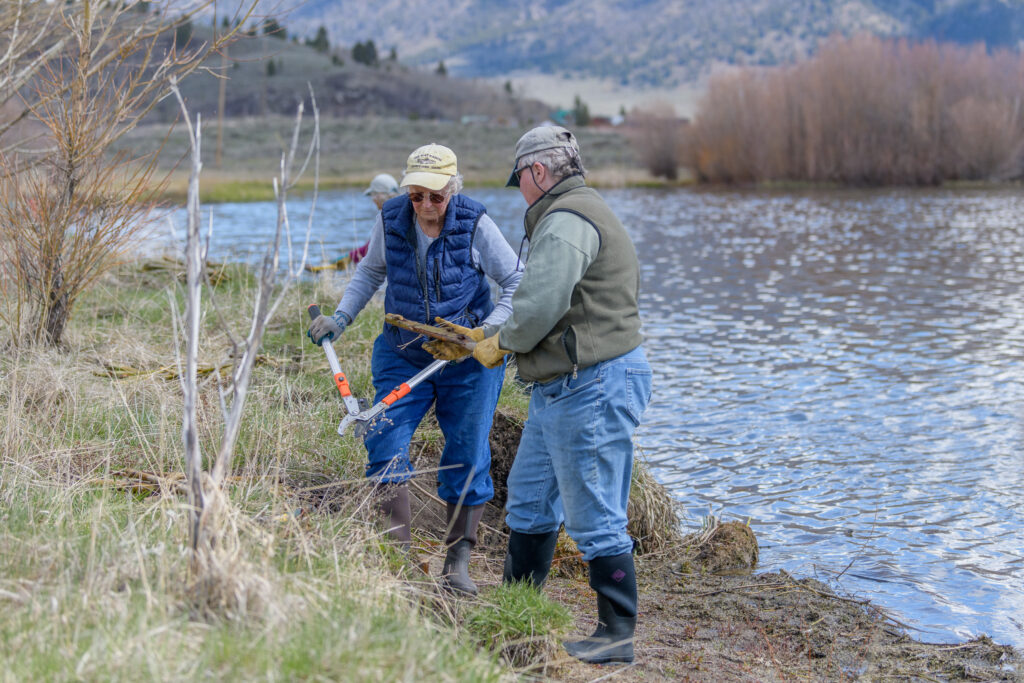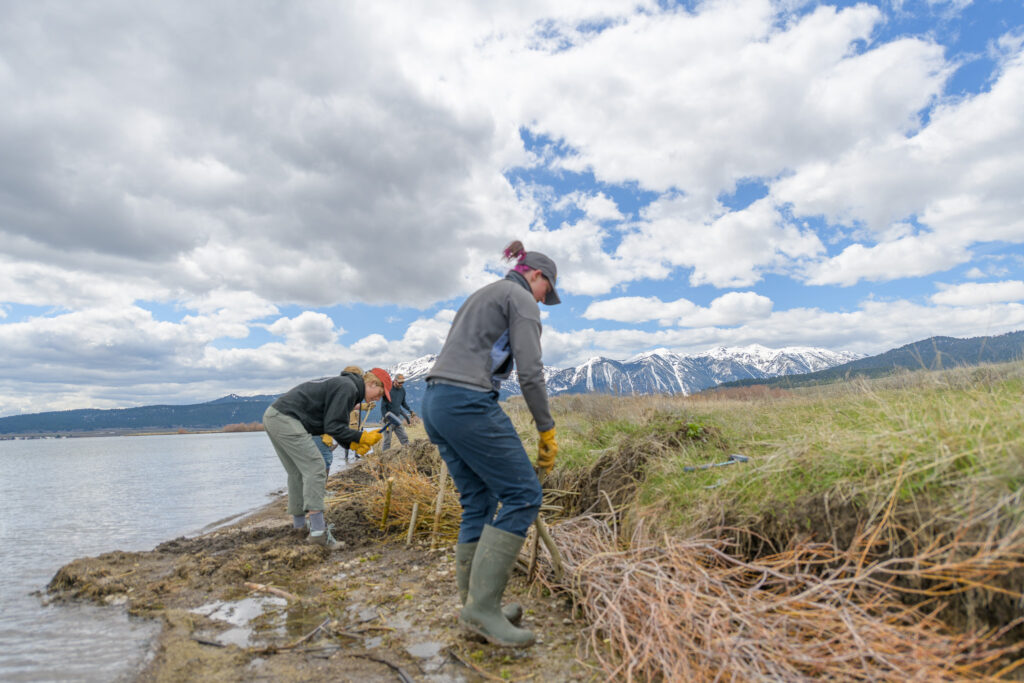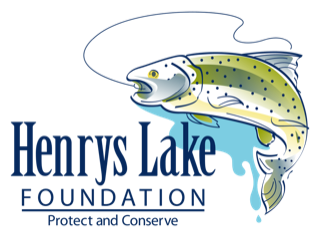
Mary Van Fleet and Nancy Olson of Island Park trimming willow stakes for planting. Photo Credit Tracy River

Volunteers plant willows on eroded lakeshore . Photo credit Tracy Rivers
Island Park, Idaho, May 28, 2022 — Volunteers from Henrys Fork Wildlife Alliance, Henrys Lake Foundation, and Idaho Master Naturalists worked a total of 70 hours over three days in May alongside staff from the Bureau of Land Management-Upper Snake Field Office. The project, supported by volunteer labor, was conducted by BLM to restore a badly eroded section of the west shore of Henrys Lake.
Continuing an ambitious multi-year project that started last year, they planted more than 1,000 dormant willow stakes, collected from nearby vigorous willow stands along the lake. The stakes are expected to leaf out and take root this summer and eventually help restore the natural willow growth along the shore, improve shoreline stability, and benefit water quality.
Mary Van Fleet of Island Park, who helped recruit many of the local volunteers, says “Planting dormant willow sticks right at the edge of an eroding bank and into the shoreline helps protect the shoreline from erosion that occurs during wave action in wind events. It also protects the shoreline from ice surge during the winter which deteriorates the bank.”
She says stabilization of the banks is extremely important to reduce siltation in the lake and contribute to water quality for fish and anglers. It also provides excellent habitat for moose which utilize the willows as a food source, along with various birds and other wildlife species.
Van Fleet says, “in addition to benefiting elk, moose, and other wildlife, willow bottoms around the Lake are important habitat for many species of birds, both songbirds and waterfowl, as a food source, protection, and nesting areas.”
Ryan Beatty, Fisheries Biologist with BLM, was the lead for planning the shoreline restoration project and expressed his appreciation for all the volunteers who conducted the work. “Many hands make light work, and this effort would not have been possible without the contributions of volunteers.” He says, “Patience and a little luck should lead to substantial increases in shoreline willow density, shoreline stability and reduced shoreline erosion in the future.”
Beatty also encourages landowners to retain natural vegetation during property development and maintenance of their land. He says planting inexpensive native vegetation-based enhancements to lakeshore properties can preserve the lakeshore and attract wildlife.
For more information contact Mary Van Fleet at 208-558-9127
Jean Bjerke
President
Henrys Fork Wildlife Alliance
